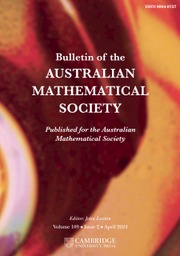The art of mathematical modelling forms one of the foundational activities of applied mathematics that bridges the gap between mathematical theory and experimental observation. The construction of any mathematical model inevitably requires decisions on the type and amount of prior structure to be imposed by the modeller. More importantly, the choice of model structure both directly and indirectly influences the collection of mathematical methods that may be used in analysis, from within and external to the topic of study.
This thesis is a commentary and discussion of the influences of model structure on the development of analytical tools. We centre this discussion on the context of nonlinear dynamical systems and time-series analysis, and consider two different notions of model structure. These are structure in dynamics and structure with dynamics. Along these lines, we discuss how ideas from two mathematical disciplines, embedding theory and network theory, may be synergistically used in conjunction with a choice of model structure to develop new tools for mathematical and numerical analysis, inference and qualitative modelling of complex systems. Analyses are conducted on a variety of systems such as opinion dynamics, neuron dynamics, chaotic dynamical networks and electrocardiogram (ECG) dynamics. We discuss two main ways in which structure may be included in the modelling process: (1) by including information of structure found in observed dynamics and (2) by imposing a form of structure with dynamics consistent with a prior assumption. We also demonstrate how the consideration of model structure can be used to produce interdisciplinary analysis methods. This thesis aims to promote discourse on the interdisciplinary nature of mathematical modelling and its benefits, particularly in the study of complex systems. To demonstrate this, we present a collection of novel time series analyses based on ideas from topological data analysis, embedding theory and network theory to tackle key problems in the study of complex systems and nonlinear time-series analysis. These are selection of optimal embedding delay parameters, edge inference of dynamical networks and change point detection. To supplement the discussion on the relationship between structure and dynamics, we also provide an analysis of boundary confidence models (BCMs) and propose a novel method of updating network structure using ideas from game theory.
Some of this research has been published in [Reference Tan, Algar, Corrêa, Small, Stemler and Walker1–Reference Tan, Stemler and Small4].


